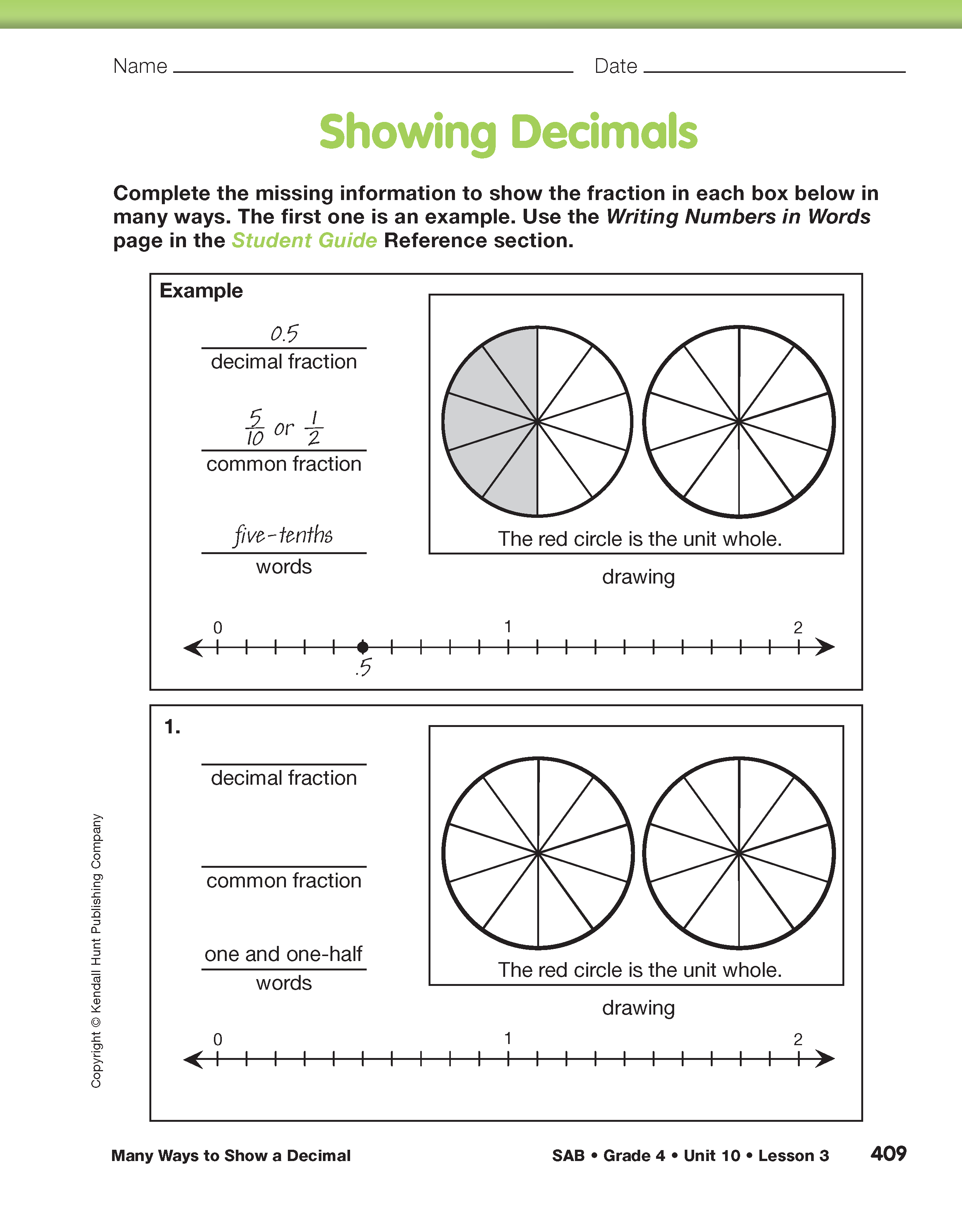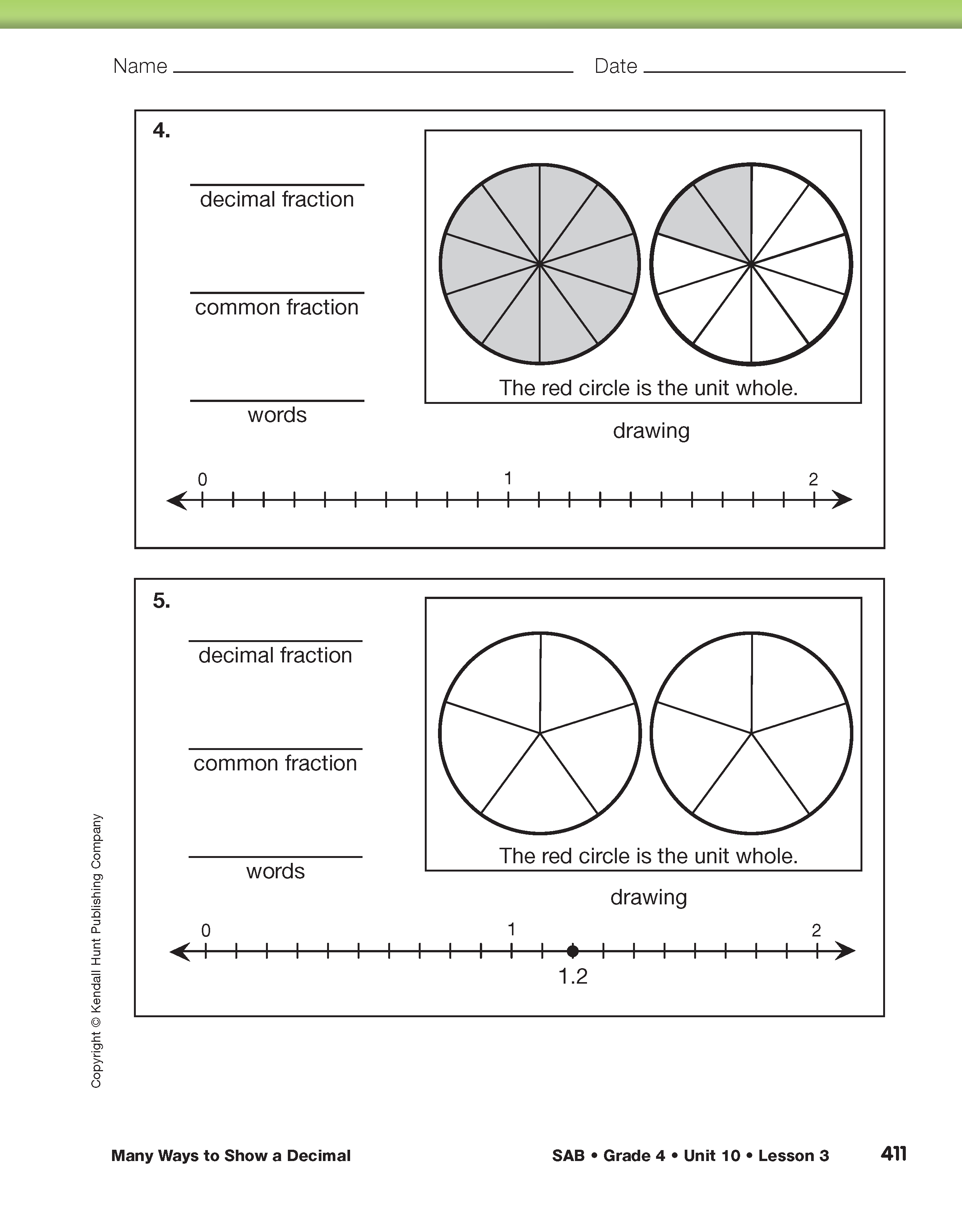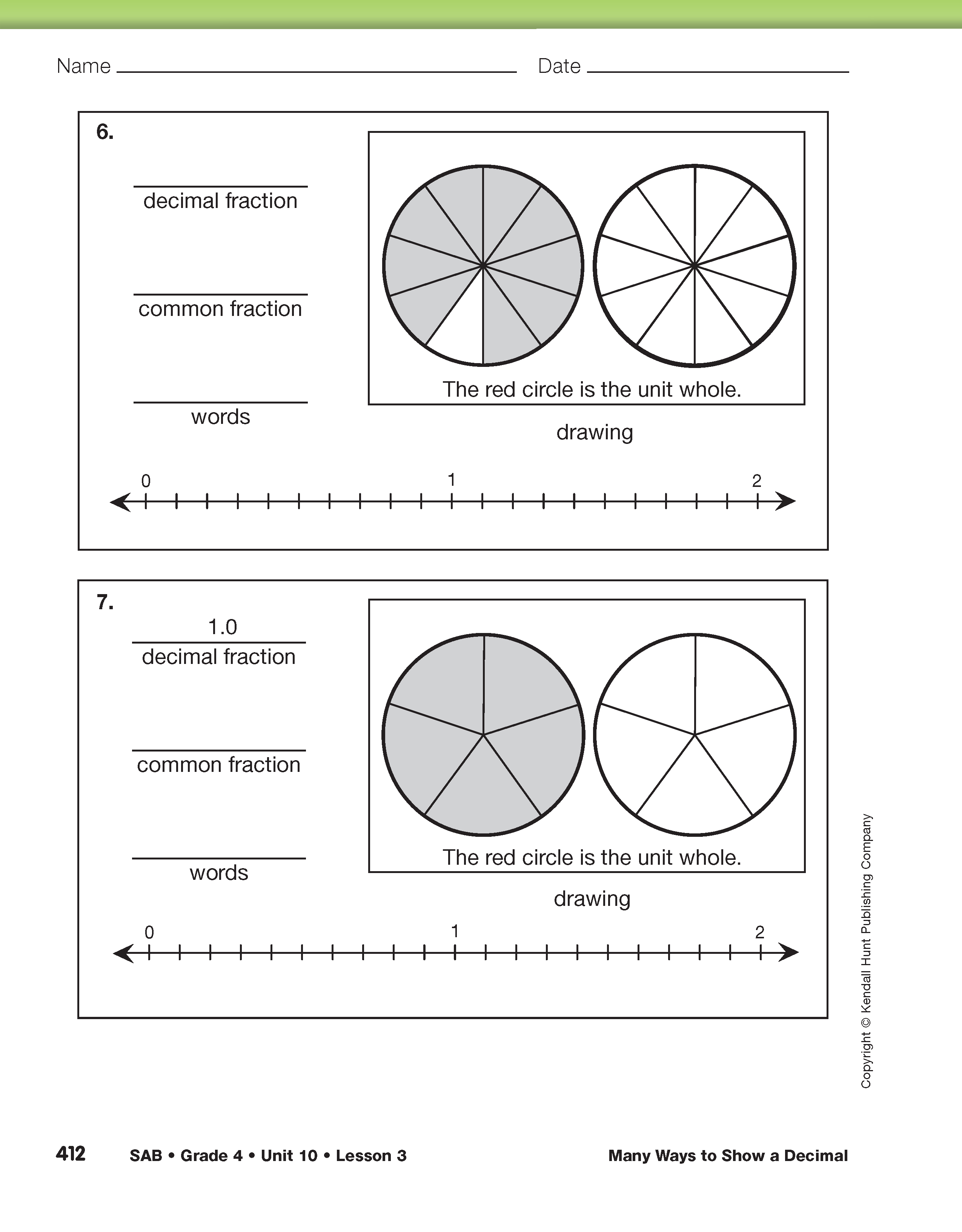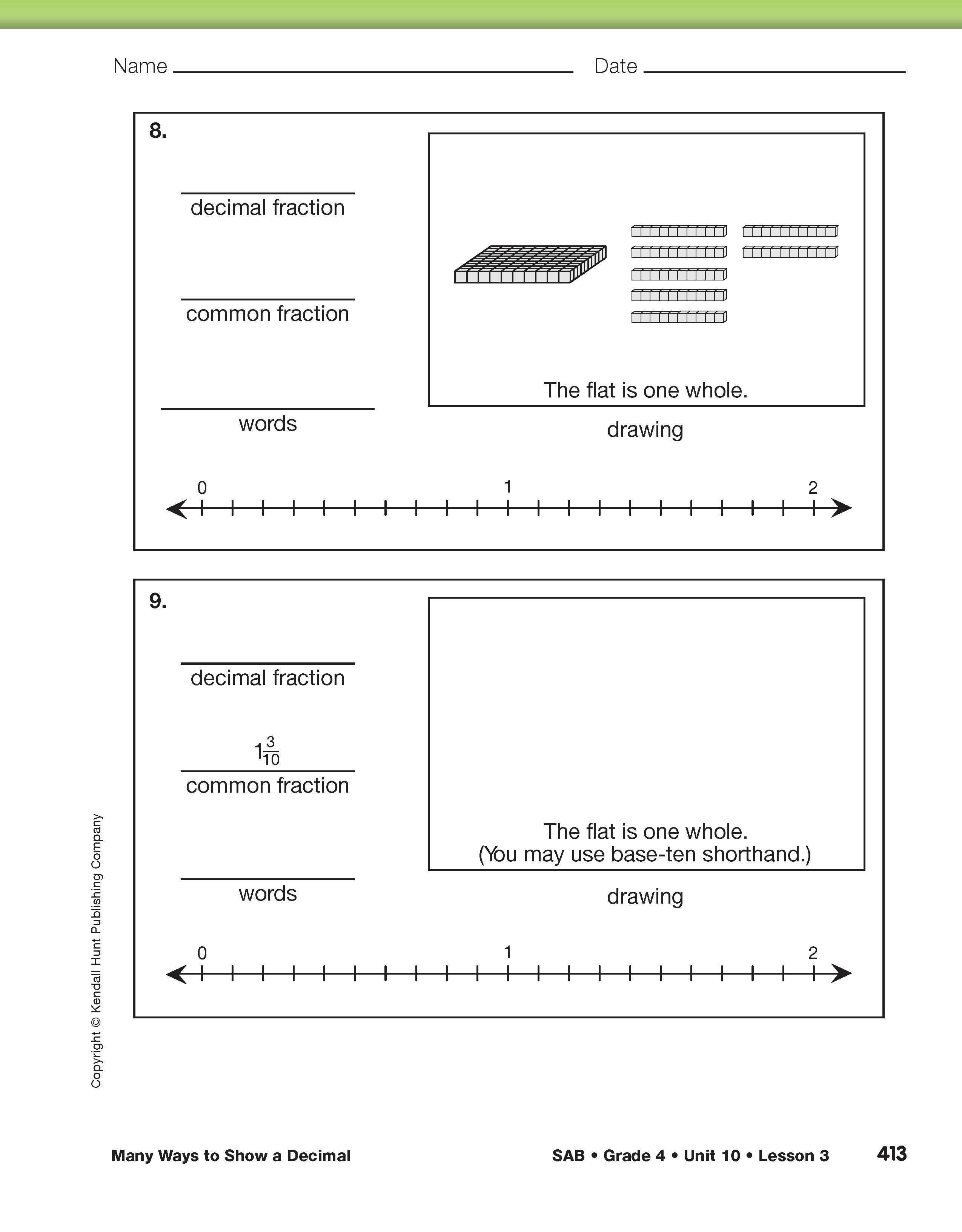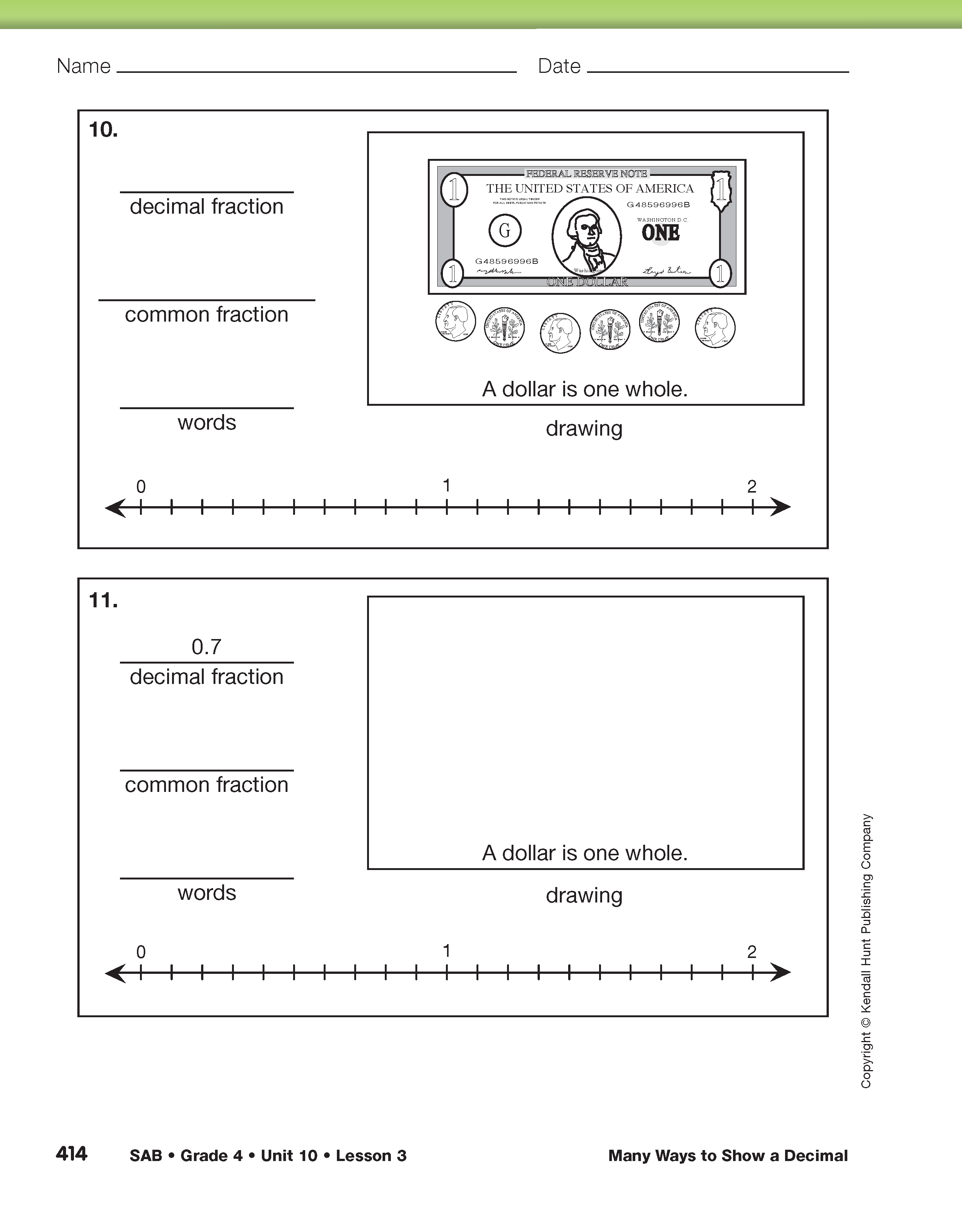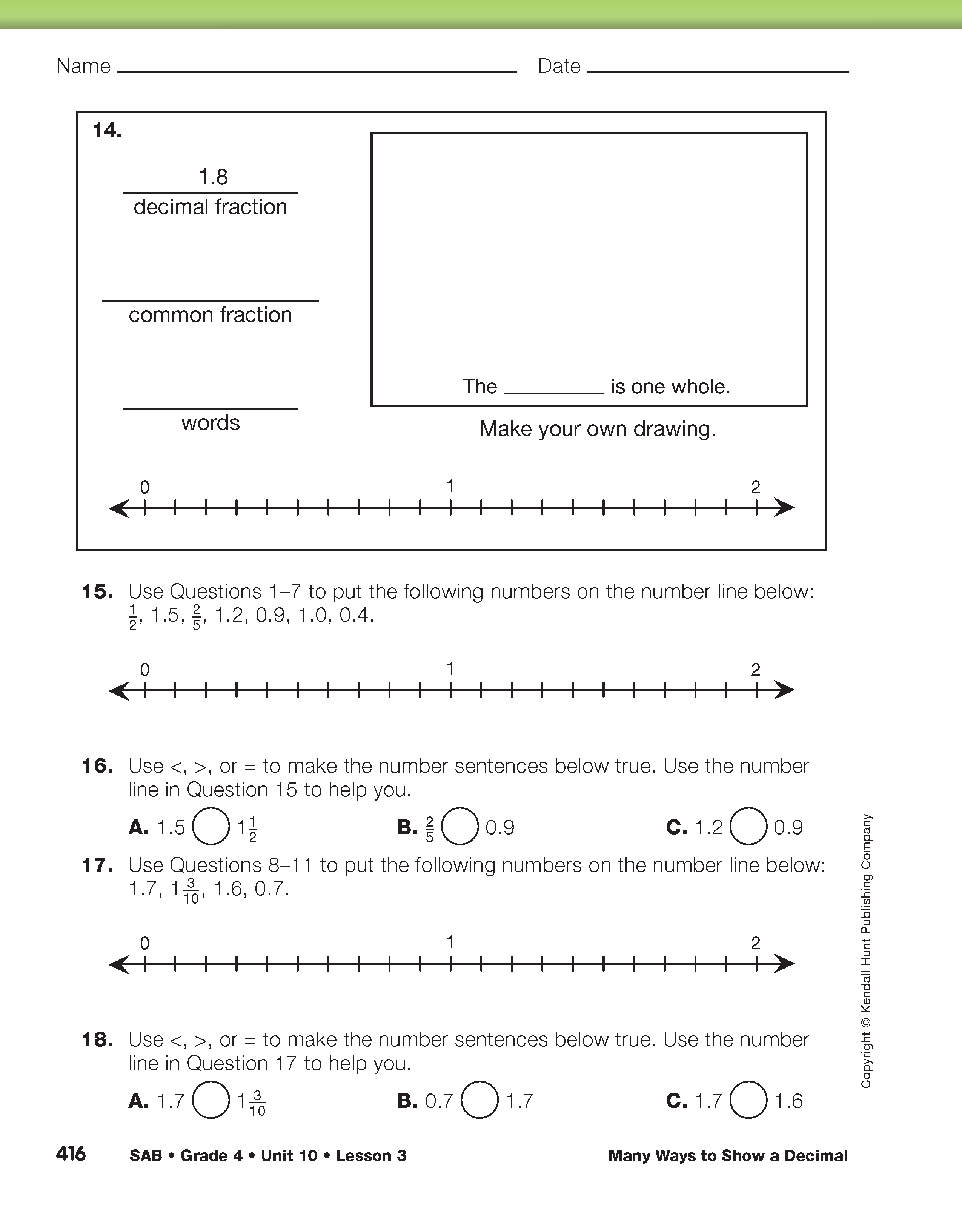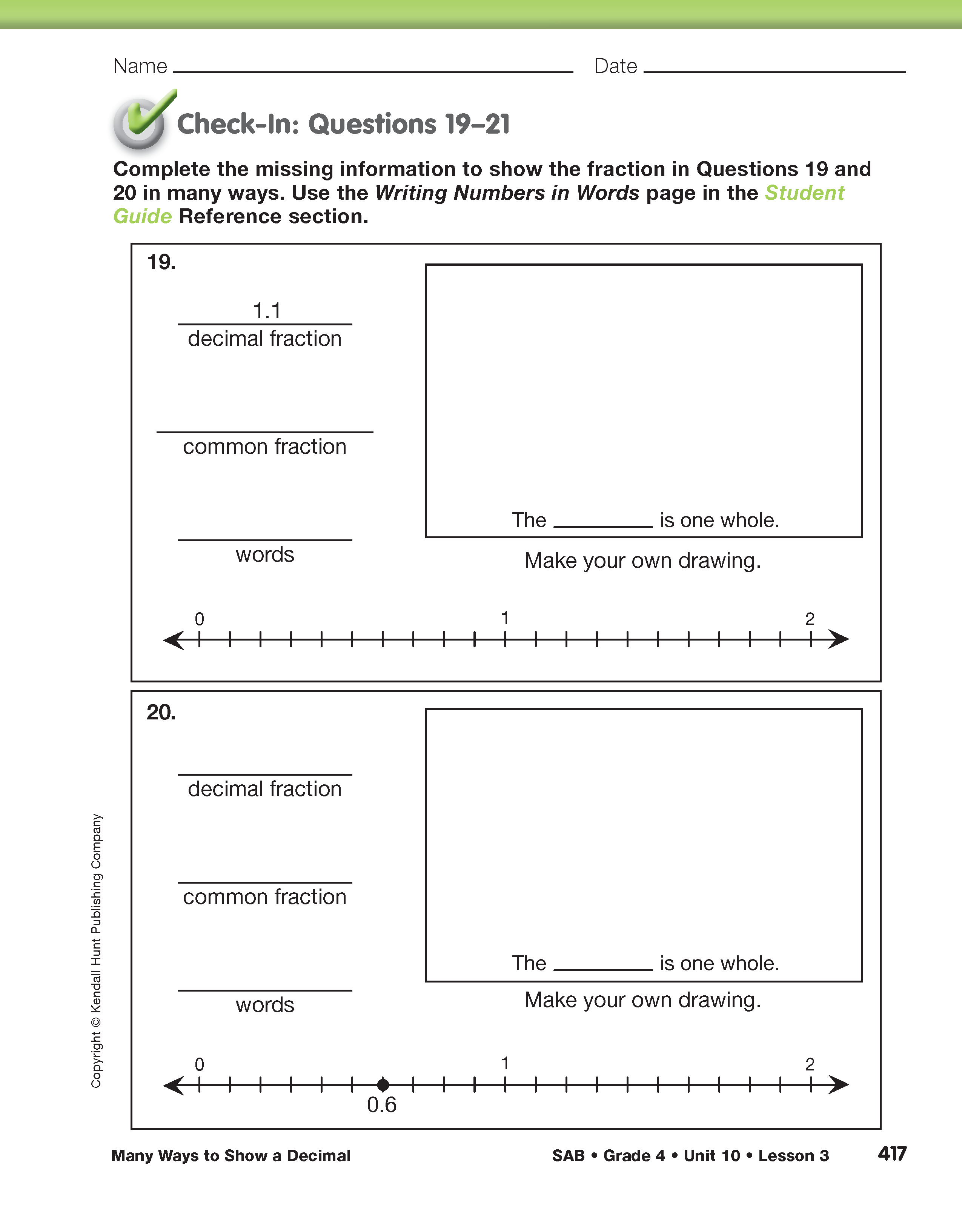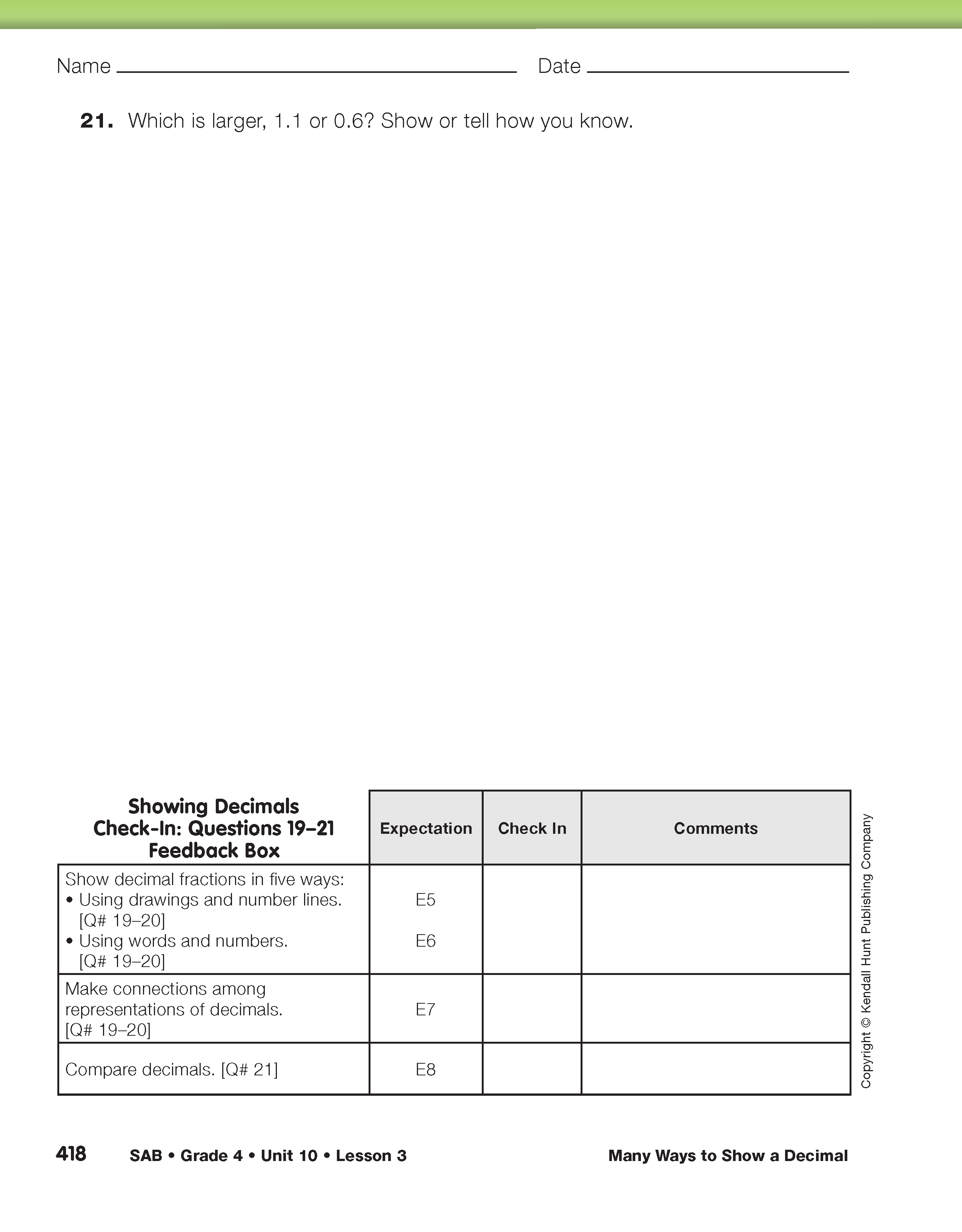Many Ways to Show a Decimal
Est. Class Sessions: 1–2Developing the Lesson
Part 3. Showing Decimals
Represent Fractions. The Showing Decimals pages in the Student Activity Book ask students to represent decimal fractions in five different ways: as a decimal fraction, as a common fraction, in words, on a number line, and in a drawing. Have students follow the example on the first page to complete Questions 1–14. Encourage them to refer to the Writing Numbers in Words page in the Reference section of the Student Guide. Display the Show That Decimal Fraction Master to introduce the pages.
As students work, ask questions similar to those below for Question 1 to check for understanding:
Questions 1–7 use the red circle as the unit whole. Questions 8–14 help students think flexibly about the unit whole. Questions 8 and 9 use base ten pieces, Questions 10 and 11 use one dollar, and Questions 12 and 13 use a set of ten objects. Students choose their own representation of one whole for Question 14.
Compare Fractions. Questions 15–18 ask students to use the representations in Questions 1–11 to compare decimals. For example, students use Questions 1–7 to locate the common fractions and decimal fractions in those questions on one number line. Then, they use the number line to compare fractions by completing number sentences using <, >, and =.












